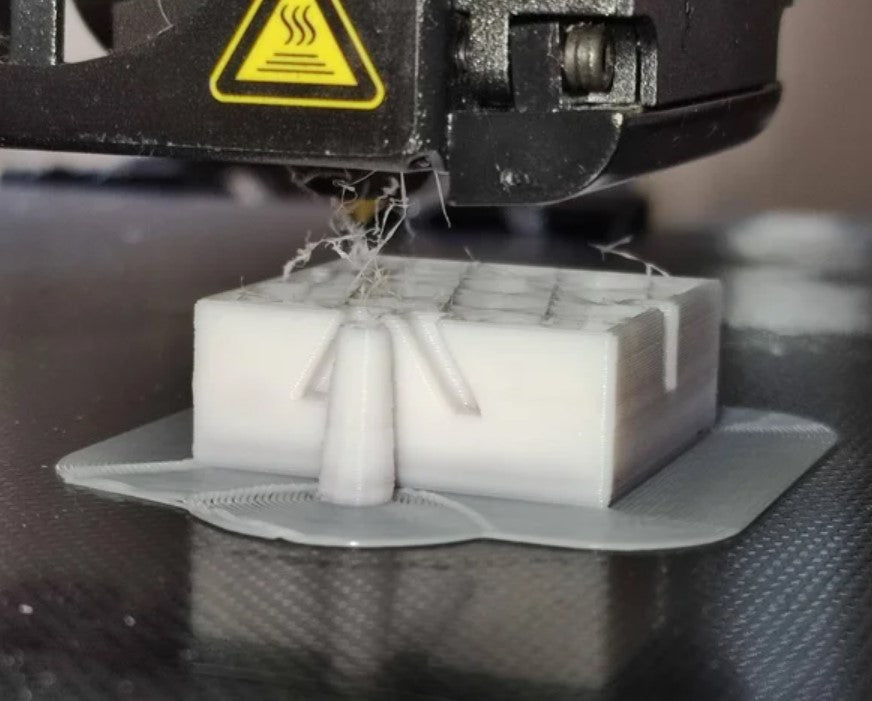
How to fix clogs and obstruction in a 3D printer hot end
Share

Filament clogs are a common problem in 3D printers, and they result in extrusion issues ranging from intermittent under extrusion to a full blown clog. It can happen due to several reasons, such as improper filament feeding, debris accumulation in the hot end, or heat creep into the heat break. Recognizing a filament clog in a 3D printer is essential to ensure the success and quality of the 3D print.
The following are the signs of a filament clog in a 3D printer:
- Reduced or no filament extrusion from the printer's nozzle (for example, the printer is “printing” in air with no filament coming out).
- Irregular extrusion or gaps in the printed object.
- The printer's extruder motor making unusual sounds.
- Plastic powder buildup around the extruder gear.
- The extruded filament twists as it exits the nozzle.

To fix a filament clog in a 3D printer, follow these steps:
- Stop the 3D printer and turn on the heating element to an elevated temperature (perhaps regular printing temperature + 10 ⁰C).
- Use the printer's software to retract filament from the printer's hot end.
- Cut off the deformed or grinded part of the filament and reload the filament back into the 3D printer.
- Push the filament into the hotend manually to purge filament through nozzle. If the filament doesn’t go all the way to the nozzle: Hold the filament with two fingers where it enters the hotend and remove the filament. With your fingers still on the same spot of the filament, put the filament up against the outside of the hotend with your fingers at the same height as they were to determine how deep the filament went into the hotend. This tells you where the filament starts to become blocked. If the filament can’t get passed the heat break, the clog was caused by heat creep into the heat break (when the heat break becomes hot enough to melt plastic, and plastic gets stuck there). Put a soldering iron against the heat break to soften any solidified plastic. Push the plastic through with a metal rod that is ideally 0.25mm lower diameter than the filament you use. If the filament gets to the nozzle or heated block parts, but can’t get past them, remove the nozzle and install a new nozzle.
- Increase the printer's temperature to soften the filament and allow it to flow freely.
- Use a thin wire or needle to clear any blockage in the printer's nozzle gently.
- Run a test print to check if the problem is resolved.
To prevent filament clogs in a 3D printer, follow these steps:
- Use high-quality 3D printer filament that is compatible with the printer. Our quality processes at American Filament ensure that the filament will not cause clogs, because we don’t water down our resin with cheap, lower quality plastic additives.
- Ensure that there aren’t any tangles in the filament – particularly in the spool.
- Store the filament in a dry and dust-free environment to prevent contamination.
- Keep the printer's nozzle and extruder clean and free from debris.
- Consider upgrading your extruder to a dual gear extruder.
- Make sure that the filament doesn’t excessively rub on parts of the 3D printer on the way to the hot end, and make sure the spool rotates freely on the spool rod.
- Check the printer's temperature settings to ensure that they are within the filament’s recommended range.
- Avoid leaving the printer unattended or at least check on it routinely during the printing process.
By following these steps, you can fix and prevent filament clogs in your 3D printer and ensure the highest quality 3D prints. If you have any questions or recommendations, please leave them in the comment section!
